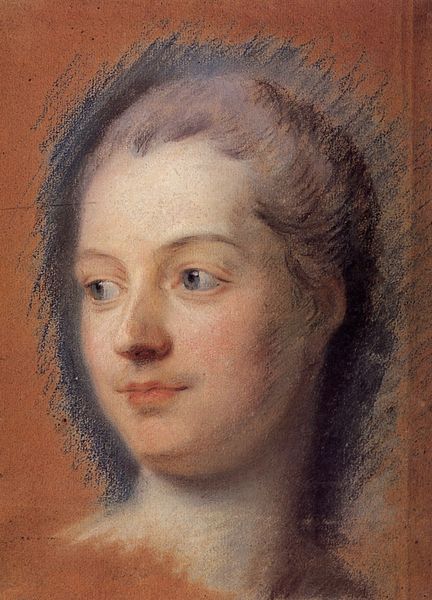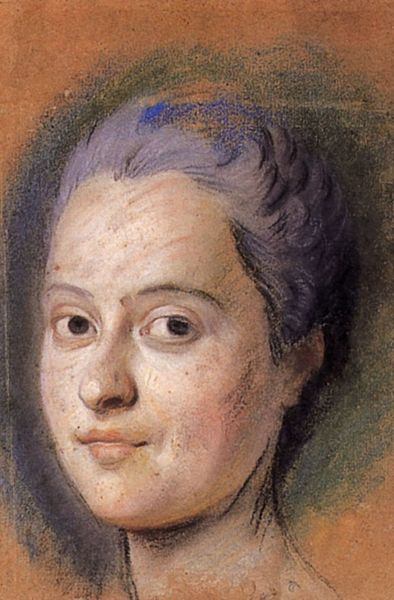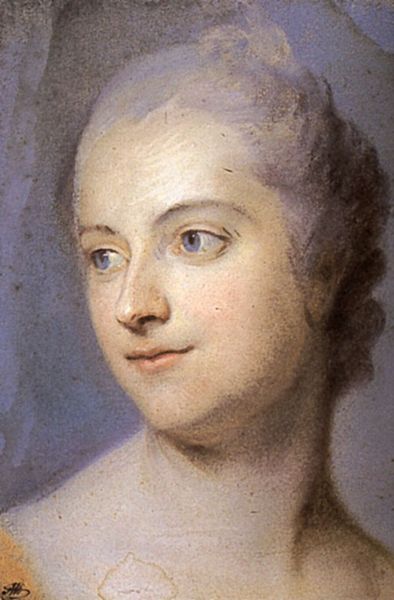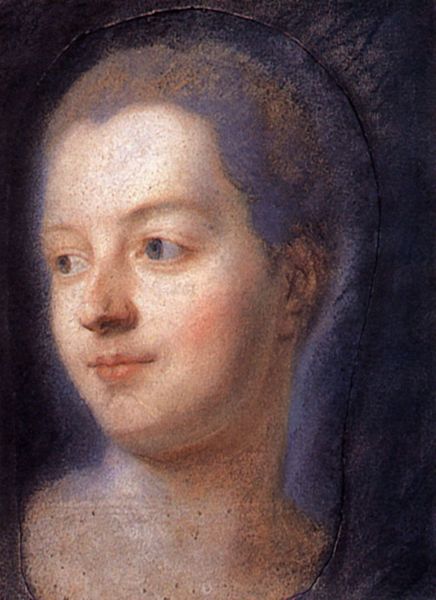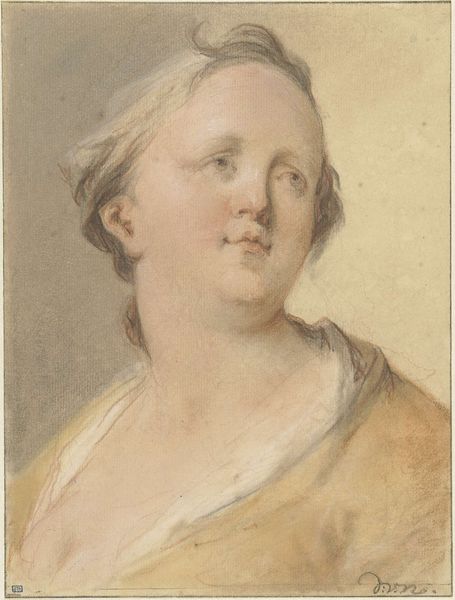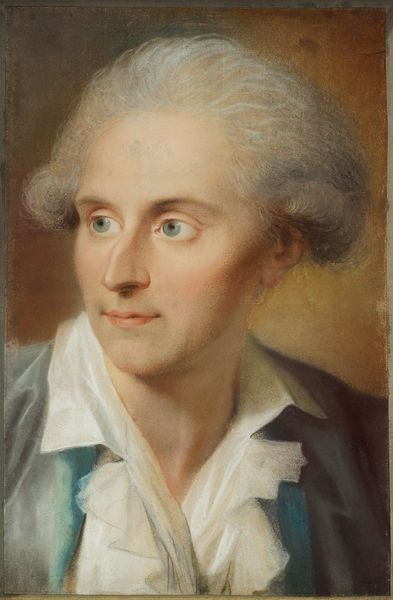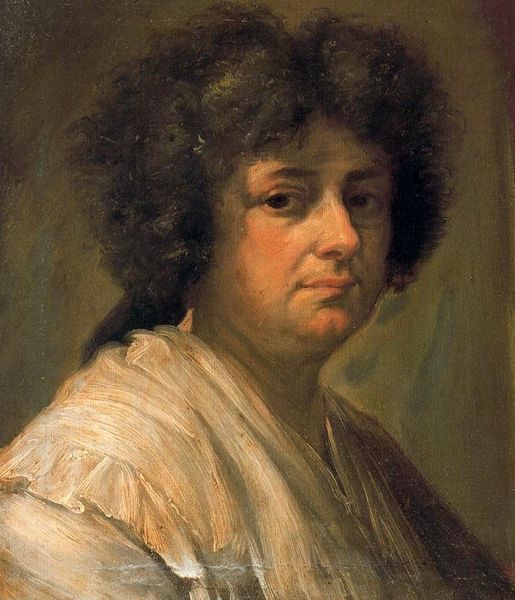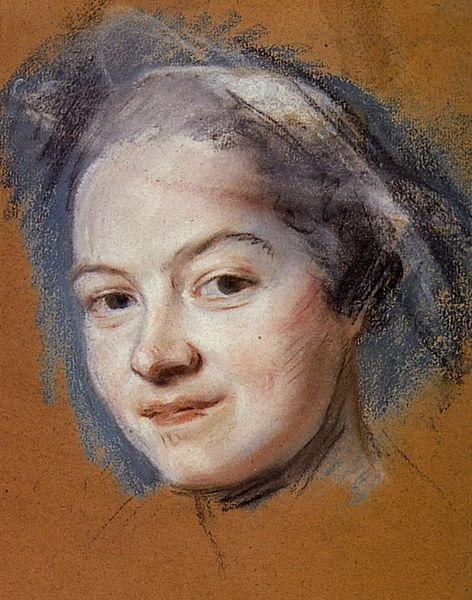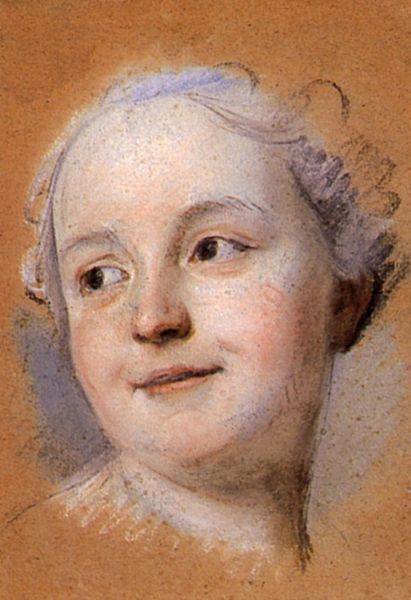
pastel
#
portrait
#
self-portrait
#
pastel
#
rococo
Copyright: Public domain
Editor: We’re looking at Rosalba Carriera’s “Self-Portrait” from 1746, created in pastel. It has a certain ethereal quality, almost like a memory fading into the background. What can you tell me about the symbolic imagery Carriera employs in this piece? Curator: Notice the laurel wreath adorning her head. This isn't mere decoration; it's a deliberate symbol. Traditionally, the laurel signifies victory and triumph, and, importantly, artistic achievement. For Carriera, who championed pastel portraiture and broke through the glass ceiling, it spoke to her identity. Does that wreath evoke classical allegories in your mind? Editor: It does, instantly connecting to ideas of art and victory but almost… ironically? Her expression isn't triumphant, it’s rather pensive. Curator: Precisely! This tension enriches the work. The gaze directed outward, slightly melancholic, is combined with the vibrant, almost assertive laurel. Do you think it presents us with conflicting messages? Editor: Perhaps she's contemplating the cost of that victory, the challenges she faced as a woman artist. Curator: Or the ephemerality of fame. Pastel, her chosen medium, known for its delicate nature, subtly reinforces this idea. Its impermanence serves as a vanitas symbol. Do you see how the visual language reinforces her cultural impact? Editor: I do! I hadn’t considered the choice of pastel in that context. So the medium itself is part of the symbolic weight of the portrait. I definitely learned something today! Curator: It all adds layers of understanding to Carriera's legacy. Hopefully this insight has equipped you with more perspective, too!
Comments
No comments
Be the first to comment and join the conversation on the ultimate creative platform.

